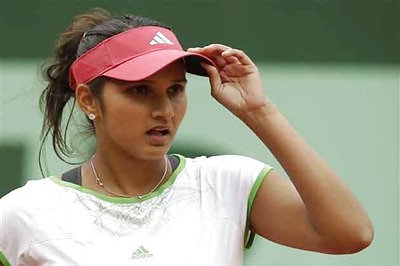
views
With the grounding of the 737 Max aircraft, the Indian skies will see 15,000 fewer seats in the air. Interestingly, this comes on the heels of 12,000 seats already taken out due to the pilot shortage faced by IndiGo and the continuing financial challenges faced by Jet Airways.
With so much supply taken out of the market, fare levels are bound to rise. Given the fragile state of several airlines, competitors may engage in aggressive tactics. One argument is to let the market forces prevail with zero intervention. But given that aviation is a key economic driver for mobility as well as job creation, and with the upcoming elections — that does not seem to be a tenable option. Thus, the aviation regulator faces tough choices. These are highlighted below:
Addressing the Supply-Demand Mismatch
January 2019 saw 12.4 million passengers fly against a capacity of 12.5 million seats. After 52 weeks of double digit growth, the year over year growth slowed down to 9.1% (still a very respectable number).
With the current grounding, coupled with earlier schedule reductions, the total supply of seats across the Indian skies has declined by five per cent. A further reduction is likely with Jet Airways only flying 50% of its fleet. Needless to say, the supply side has changed considerably.
To address the supply side, the regulator will have to come up with innovative measures. Alternative capacity measures, higher utilisation from existing operators and even mandating certain schedules to be flown are options being looked at.
Ensuring Fare Levels Stay "Reasonable"
The capacity reduction, coupled with the upcoming peak travel period of April through June, will cause fare levels to rise. Initial estimates indicate a seven to 10% increase, which is almost certain and fares will likely go much higher. The most price-sensitive travellers and SME segments are likely to be most impacted.
To address this, the DGCA issued a directive, “airlines have been asked not to overcharge”. The ambiguity of this order highlights the challenge posed. After all what constitutes a reasonable fare?
There was also earlier discussion on the topic of price capping. Levying a price cap poses an additional challenge in that determining a capping level is a matter of intense discussion. Additionally, as the cost of delivery (measured as the cost per seat kilometers) for airlines is very different. So there is varying impact to profitability with price caps.
Overall a very challenging situation.
Monitoring Liquidity Especially Cash-flow
Airlines don’t always price for profit. Several pricing decisions are driven by cash-flow needs. And for Indian aviation, the varying debt levels and balance sheet strength (or weakness) poses another challenge.
With the 737 Max groundings, there is already impact cash flows because of the immediate decline in forward bookings. While the length of the grounding cannot be determined, it is safe to say that there is also an impact to sale and leaseback cash-flow — both the quantum and the timing. Part of this will be offset by compensation by the manufacturer addressing the quantum of cash. Yet, the timing of the cash-flow remains a challenge.
Furthermore, the NPA crisis has led to a constrained lending environment domestically. Other avenues such as External Commercial Borrowing are not easy options (although ECB norms have been eased as notified in the January 2019 policy).
Monitoring the cash-flow situation will require intense engagement.
Limiting Impact to Expansion and Turnaround Plans
Both Jet Airways and SpiceJet have voluminous orders for the 737 Max. To that end, the expansion plans of SpiceJet and the turnaround plans of Jet Airways hinged on this airplane. The grounding not only complicates matter due to aircraft not being available, but also because there is no set date on when these aircraft will be certified to fly again. Even post certification, if there are modifications required these can have consequential impacts to aircraft delivery dates.
With the Indian market forecast to be the 3rd largest aviation market by 2025, all airlines are rushing to capitalise on market growth. The fight for slots, parking and bilateral rights is intense and competitors are already attempting to grab as much as possible.
In such a scenario, the regulator has to ensure a level playing field. Luckily, the regulator has managed such a situation before, given the earlier delays to the Airbus320 NEO.
Safeguarding Overall Market Growth
The current government has focused on aviation as a key driver for the economy. India saw the first comprehensive civil aviation policy (NCAP) in 2016 followed by the regional connectivity scheme (UDAN) in 2017. The airport capacity enhancement, development and financing scheme (Nabh Nirmaan) was launched in 2018. All of these have been with a view to increasing affordability of air travel.
Affordability of travel also drives other economic benefits as aviation has a multiplier effect. For each aviation job, there are three to five indirect jobs created and connectivity drives tourism, trade and talent. The fastest and most economical way to connect two city pairs is still via air.
That said, all is not well with the country’s airlines. Weak balance sheets, high costs of operation and intense competition have left the sector fragile and it is likely that the situation will become worse before it gets better. And with airlines being at the apex of the aviation value chain – safeguarding overall market growth will be paramount.
For the aviation regulator, there is a constant pull and push, a sea of pressure and contradictory advice. While airlines will push for certain outcomes, they may not be the best for all segments of travel. On the opposite side, travellers will push for lower fares and that may not be sustainable. Throw in the banking crisis, geopolitical tensions and global trade wars. And if that wasn’t enough, there is also an upcoming election.
Indeed, the aviation regulator faces tough choices post the grounding of the 737Max.
(The author led the advisory and research teams at Centre for Aviation (CAPA). Views expressed are personal.)




















Comments
0 comment